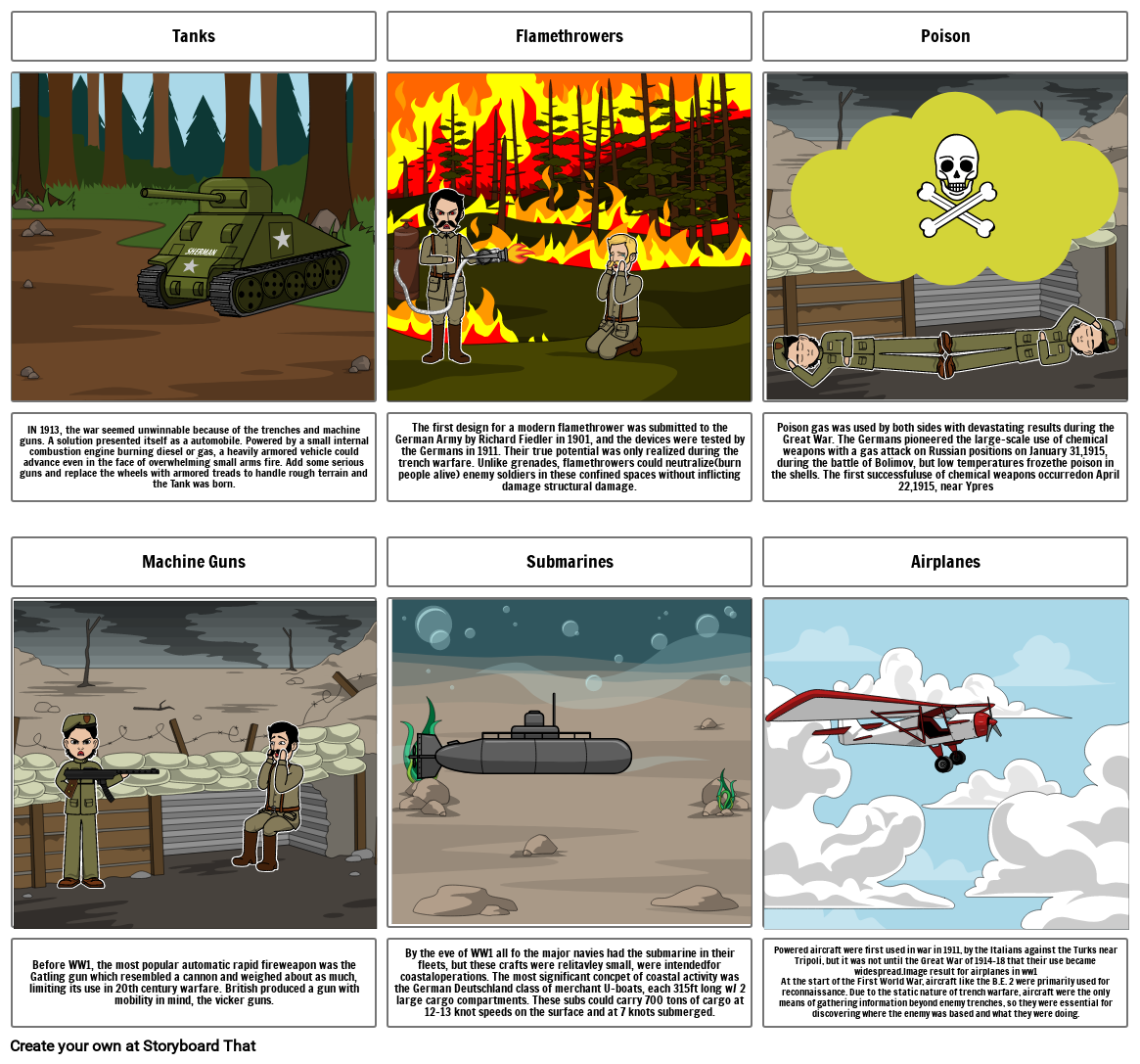Unknown Story

Storyboard Text
- Tanks
- Flamethrowers
- Poison
- IN 1913, the war seemed unwinnable because of the trenches and machine guns. A solution presented itself as a automobile. Powered by a small internal combustion engine burning diesel or gas, a heavily armored vehicle could advance even in the face of overwhelming small arms fire. Add some serious guns and replace the wheels with armored treads to handle rough terrain and the Tank was born.
- Machine Guns
- The first design for a modern flamethrower was submitted to the German Army by Richard Fiedler in 1901, and the devices were tested by the Germans in 1911. Their true potential was only realized during the trench warfare. Unlike grenades, flamethrowers could neutralize(burn people alive) enemy soldiers in these confined spaces without inflicting damage structural damage.
- Submarines
- Poison gas was used by both sides with devastating results during the Great War. The Germans pioneered the large-scale use of chemical weapons with a gas attack on Russian positions on January 31,1915, during the battle of Bolimov, but low temperatures frozethe poison in the shells. The first successfuluse of chemical weapons occurredon April 22,1915, near Ypres
- Airplanes
- Before WW1, the most popular automatic rapid fireweapon was the Gatling gun which resembled a cannon and weighed about as much, limiting its use in 20th century warfare. British produced a gun with mobility in mind, the vicker guns.
- By the eve of WW1 all fo the major navies had the submarine in their fleets, but these crafts were relitavley small, were intendedfor coastaloperations. The most significant concpet of coastal activity was the German Deutschland class of merchant U-boats, each 315ft long w/ 2 large cargo compartments. These subs could carry 700 tons of cargo at 12-13 knot speeds on the surface and at 7 knots submerged.
- Powered aircraft were first used in war in 1911, by the Italians against the Turks near Tripoli, but it was not until the Great War of 1914–18 that their use became widespread.Image result for airplanes in ww1At the start of the First World War, aircraft like the B.E. 2 were primarily used for reconnaissance. Due to the static nature of trench warfare, aircraft were the only means of gathering information beyond enemy trenches, so they were essential for discovering where the enemy was based and what they were doing.
Over 30 Million Storyboards Created

